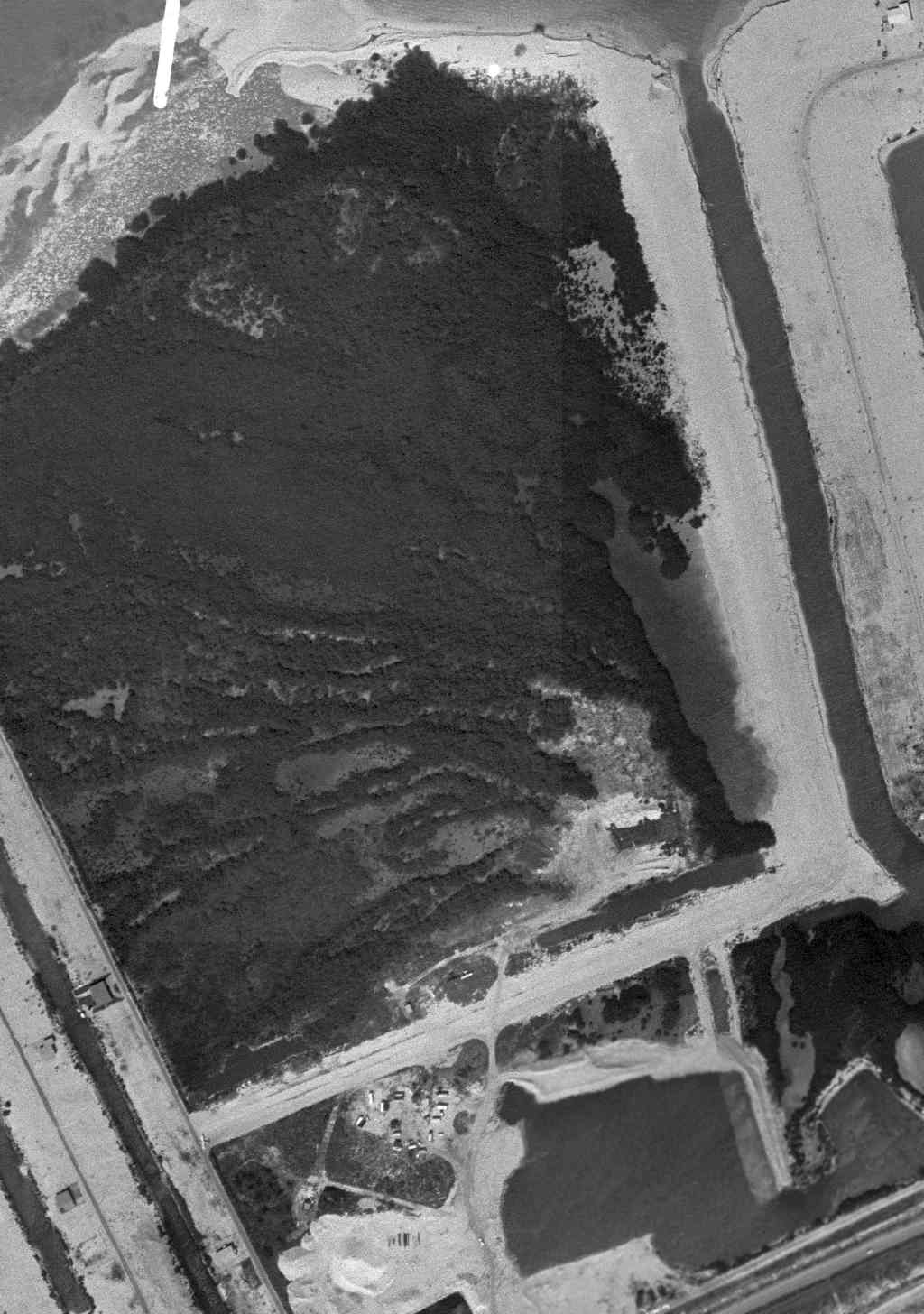
Abandoned & Little-Known Airfields:
Florida Keys area
© 2002, © 2015 by Paul Freeman. Revised 7/3/15.
This site covers airfields in all 50 states: Click here for the site's main menu.
____________________________________________________
Please consider a financial contribution to support the continued growth & operation of this site.
Matecumbe Key Airport (revised 7/3/15) - Port Largo Airport (revised 9/15/13) - Trumbo Point Seaplane Base (revised 6/10/13)
____________________________________________________
Matecumbe Key Airport, Lower Matecumbe Key, FL
24.86, -80.73 (Southwest of Miami, FL)

A 2/21/59 FL DOT aerial view of Matecumbe Key Airport (courtesy of David Henderson).
Matecumbe Key Airport was not yet depicted on the 1956 FL Aeronautical Chart (courtesy of Roger Connor).
According to David Henderson, “Jerry Wilkinson at the Florida Keys History Museum sent a notated photo of an airport I'd never heard of,
a private field on Lower Matecumbe near Islamorada.
I was stunned to see this because my grandparents lived in the Port Antiqua subdivision on this exact site for nearly 25 years
without any knowledge that it had once been an airport.
According to the Keys History Museum, the land had been owned by Alonzo Cothron who used the property to dredge & sell fill in the late 1950s.
The airport had 2 runways laid out in an L-shape.
The field appears to have been unpaved limestone gravel & sand fill typical of the area.”
The earliest photo which has been located of Matecumbe Key Airport was a 2/21/59 FL DOT aerial view (courtesy of David Henderson).
It depicted Matecumbe Key Airport as having 2 unpaved runways, with 3 single-engine planes visible parked on the field.
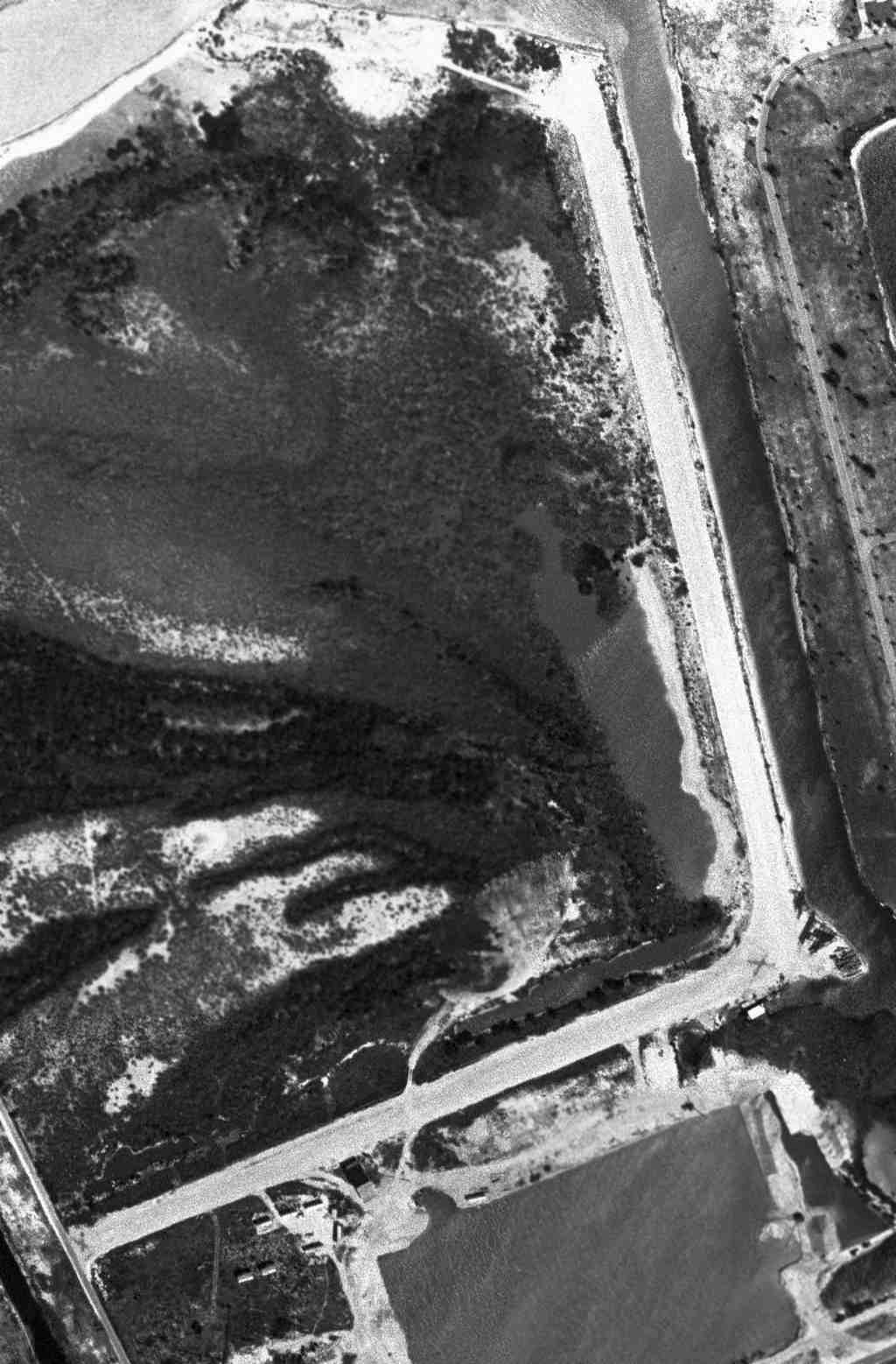
A 3/31/64 aerial view of Matecumbe Key Airport (courtesy of David Henderson).
David observed that closed-runway “X” symbols “have been placed on both ends on the east/west runway.”
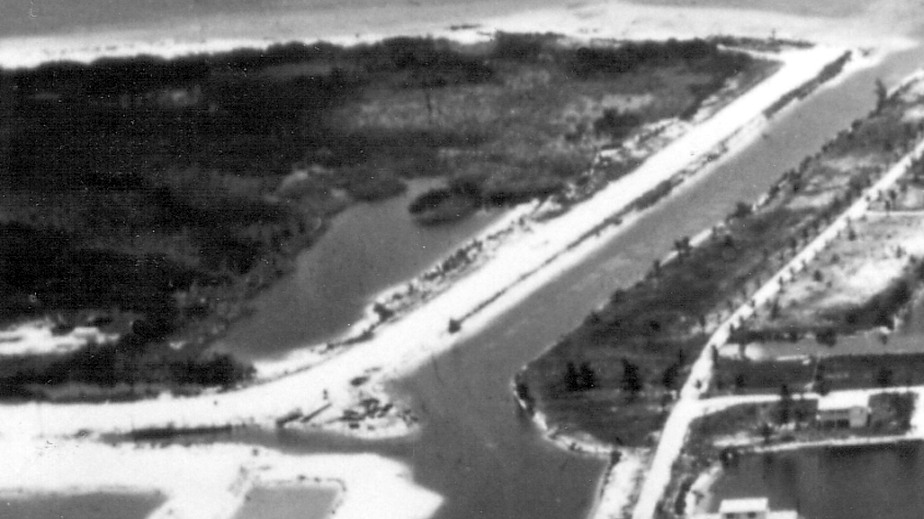
The last photo which has been located of Matecumbe Key Airport
was a circa 1964-70 aerial view looking northwest (courtesy of Loralea Carrera via Jerry Wilkinson).
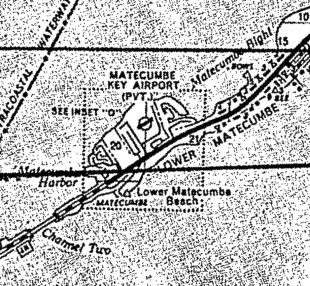
The earliest map depiction which has been located of the Matecumbe Key Airport was on a February 1966 DOT Monroe County highway map (courtesy of David Henderson),
which depicted Matecumbe Key as a private airport.
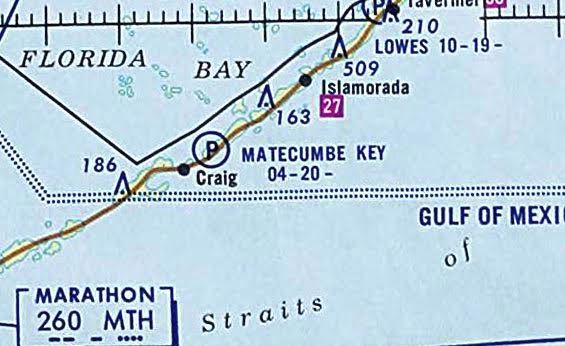
The only aeronautical chart depiction which has been located of the Matecumbe Key Airport was on the 1969 Miami Sectional Chart (courtesy of David Henderson),
which depicted Matecumbe Key as a private airport.
According to David Henderson, “By 1971, construction had begun on the Port Antigua development & canals had been dredged across parts of the former runways.
The north/south runway later became Biscayne Boulevard & the east/west runway became El Capitan Drive.
Coincidentally, my grandfather taught me how to drive here (I was only 13!)
and I remember commenting that this road was perfectly straight & flat & just the right length for a small plane. Little did I know!”
Matecumbe Key Airport was not depicted at all on the 1971 USGS topo map.
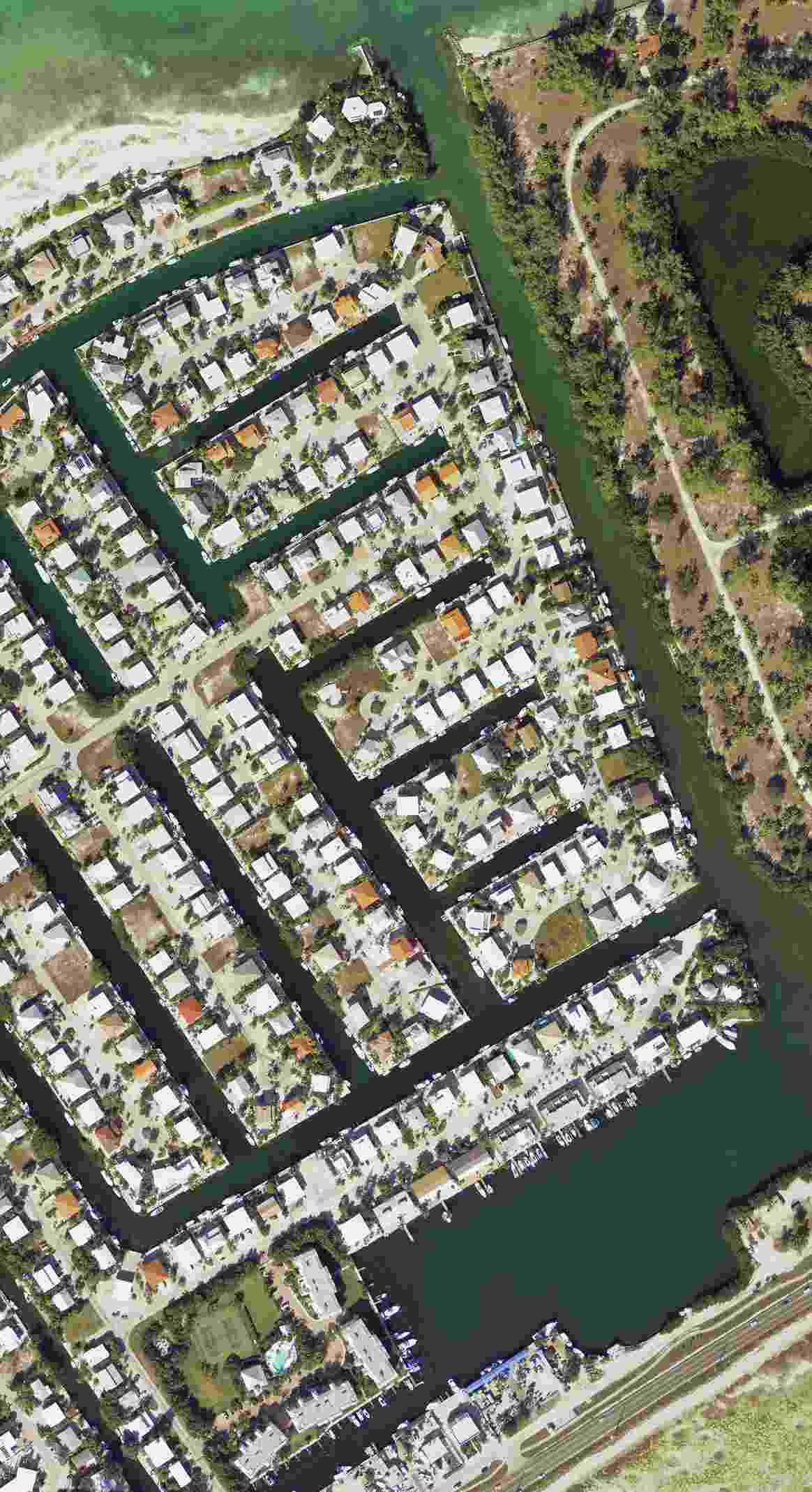
A 2012 aerial photo (courtesy of David Henderson) no trace remaining of Matecumbe Key Airport.
The site of Matecumbe Key Airport is located northeast of the intersection of El Capitan Drive & Gulfview Drive.
Thanks to David Henderson for pointing out this airfield.
____________________________________________________
Port Largo Airport (KYL), Key Largo, FL
25.09, -80.43 (Southwest of Miami, FL)
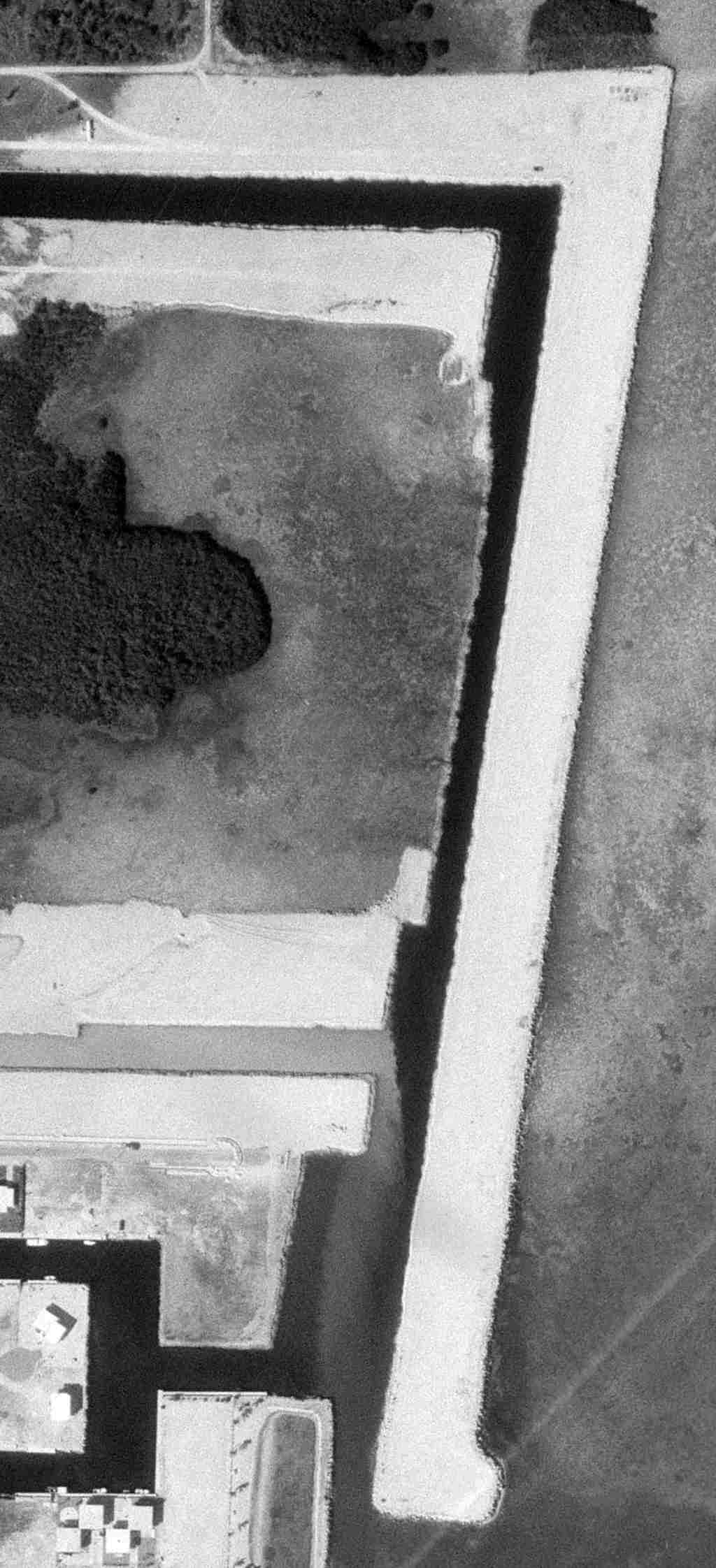
A 2/10/71 aerial view of Port Largo Airport, perhaps while it was still under construction (courtesy of David Henderson).
According to Sunshine Skies, “Port Largo Airport... dredged from the ocean floor,
was little more than a breakwater with a runway on top & operated for little more than a decade.
Despite its diminutive size, Port Largo enjoyed commercial commuter airline service & became the center of a nearly two decade legal battle.
The story of this unusual airport began in the late 1960s
with an undeveloped, submerged parcel of land owned by the State of FL on the Atlantic side of Key Largo.
The State sold the parcel to a developer who dredged the area & constructed a breakwater that was paved with a 2,300' landing strip.
It was agreed that the developer would eventually donate the property to Monroe County for use as a public airport.
Dredging began in 1968.”
The earliest photo which has been located of Port Largo Airport was a 1969 aerial view,
which depicted a single northeast/southwest runway directly along the Atlantic.
The 1970 USGS topo map depicted the land of the runway, but did not label it as an airport.
A 2/10/71 aerial photo(courtesy of David Henderson)depicted Port Largo Airport perhaps while it was still under construction,
but with a single light plane visible inland of the north runway end.
According to Sunshine Skies, “The airport was opened in 1972.”
Port Largo Airport was not depicted at all on the 1973 USGS topo map.
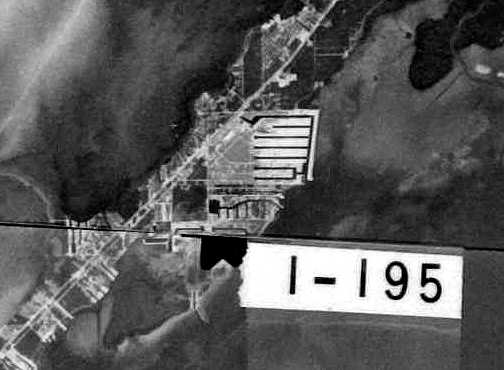
Port Largo Airport, as seen in a February 1973 USGS aerial photo.
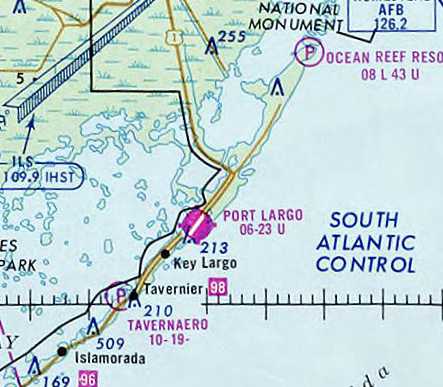
The only aeronautical chart depiction which has been located of the Port Largo Airport
was on a February 1976 Miami Sectional Chart.
It depicted Port Largo as having a single 2,300' paved northeast/southwest runway.
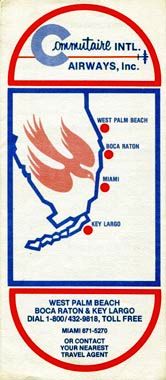
A 4/1/76 Commutaire International Airways timetable (courtesy of David Henderson).
According to David Henderson, “ommutaire International Airways served Key Largo in the mid-late 1970s.”

A still from the 1978 Beechcraft promotional film "People Machine" filmed at Port Largo Airport, facing east.
According toSunshine Skies, “In the early 1980s there were 4 airports in the Florida Keys that received commercial airline service:
Key West, Marathon, Ocean Reef, and Port Largo.
Bahamas Caribbean Airlines operated nonstop flights between Port Largo & Miami International Airport
using 9-passenger Britten-Norman Islander equipment.
An excerpt from the 12/1/81 Official Airline Guide shows 2 daily flights & a one-way fare of $45.
Bahamas Caribbean later changed its name to Aero International & then Air South.”
According toSunshine Skies, “In the early 1980s, the property was purchased by New Port Largo, Inc,
who intended to close the airport & build homes on the site.
Upon learning this, Monroe County commenced litigation to block the closure & gain legal control over the airport,
and even changed zoning laws in an attempt to block residential development.
Monroe County lost the battle in 1985 & the airport was permanently closed.”
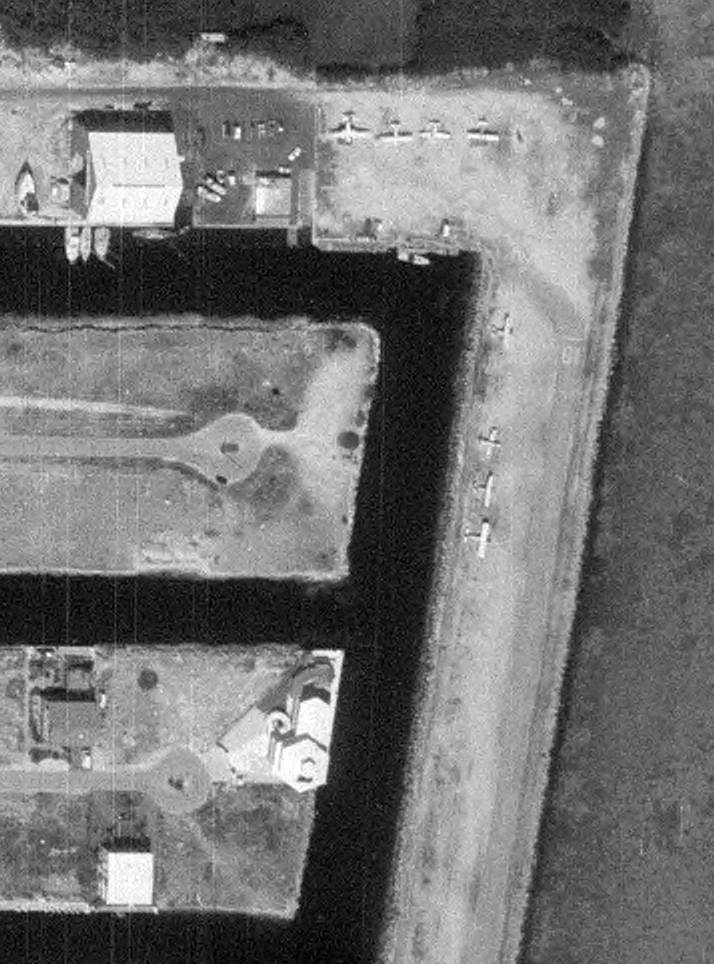
The last photo which has been located of the Port Largo Airport was a 4/3/85 aerial view (courtesy of David Henderson),
showing 8 light aircraft parked on the northwest of the narrow sliver of airport land.
David remarked, “Hard to tell, but it looks like a BN-2 Islander, the type that was flown commercially into KYL, at top left.”
A 1994 USGS aerial view showed houses built over the site of Port Largo Airport.
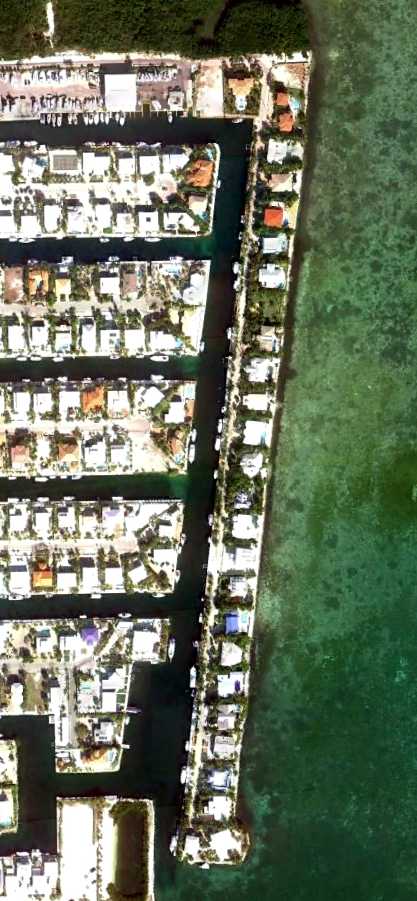
A 12/23/10 aerial photo showed houses covering the site of Port Largo Airport.
According toSunshine Skies, “The strip of land that was once Port Largo Airport,
is now a street called Ocean Cay with high-density oceanfront property.
Many residents probably have no idea that a commercial airport once operated where their houses now stand.”
____________________________________________________
Trumbo Point Seaplane Base, Key West, FL
24.56, -81.79 (Southwest of Miami, FL)
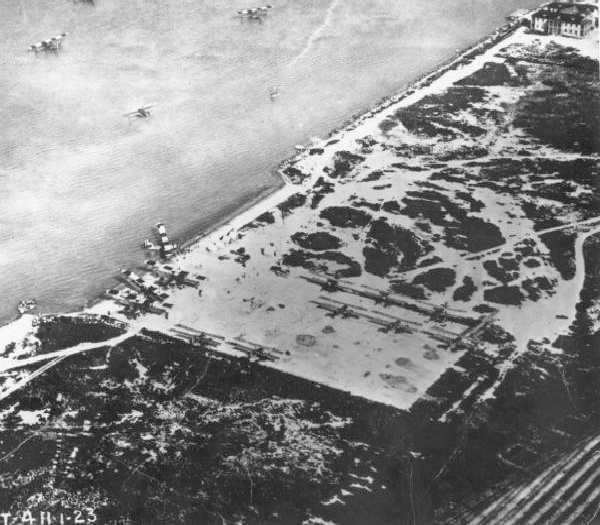
A circa 1923 aerial view depicted over a dozen seaplanes at Trumbo Point.
A Naval Air Station was first opened at Trumbo Point in 1917.
It hosted patrol flights & conducted preliminary flight training,
with 18 seaplanes & 4 kite balloons.
In 1919, the station's blimp hangar was disassembled & movedto Opa-Locka.
In the same year, the first flight to Havana (90 miles over water) departed from Trumbo Point.
The Navy reportedly closed Trumbo Point in 1920.
The earliest depiction which has been located of the Trumbo Point seaplane base was a circa 1923 aerial photo,
depicting over a dozen seaplanes on the ramp & in the water.
No seaplane facility was depicted at Key West on the December 1935 Miami Sectional Chart(according to Chris Kennedy).
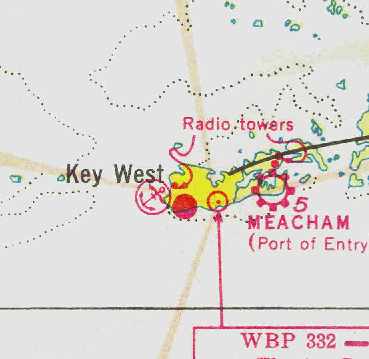
The earliest aeronautical chart depiction which has been located of the Key West seaplane base
was on the April 1937 Miami Sectional Chart (courtesy of Chris Kennedy).
Note that it depicted the seaplane base on the western side of the island (which is further to the west of all subsequent depictions).
This different location may have been erroneous.
As part of the pre-WW2 military buildup,
the Navy began to reactivate Trumbo Point in 1939,
with a PBY Catalina flying boat squadron conducting neutrality patrols.
Trumbo Point was commissioned again as Naval Air Station Key West in 1940.
The May 1941Miami Sectional Chart(courtesy of Chris Kennedy).
depicted the seaplane base on the northern side of the island, at Trumbo Point.
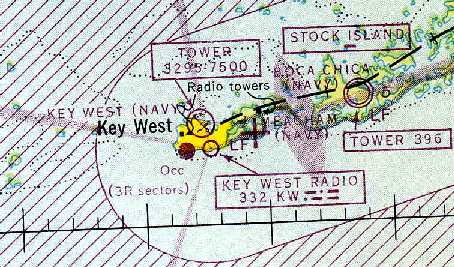
"Key West (Navy)" seaplane base, as depicted on the 1943 Miami Sectional Chart (courtesy of Chris Kennedy).
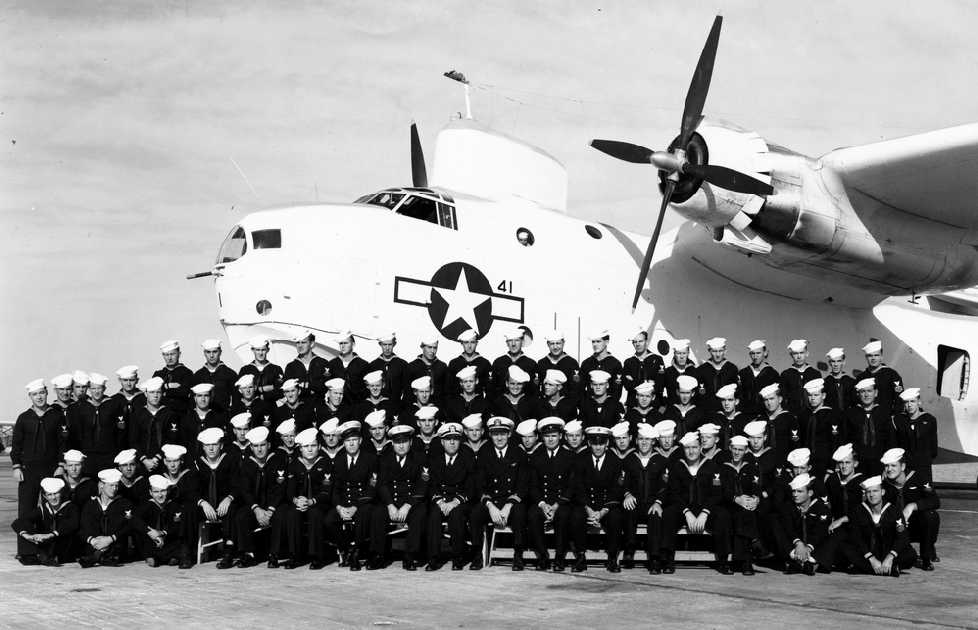
A WW2 photo of squadron members in front of a Martin PBM Mariner flying boat at Trumbo Point.
Aircraft based at Trumbo Point during WW2
included the OS2U Kingfisher, PBM Mariner, and J2F Duck.
The total complement at Trumbo Point during WW2 was a total of 2,614 personnel.
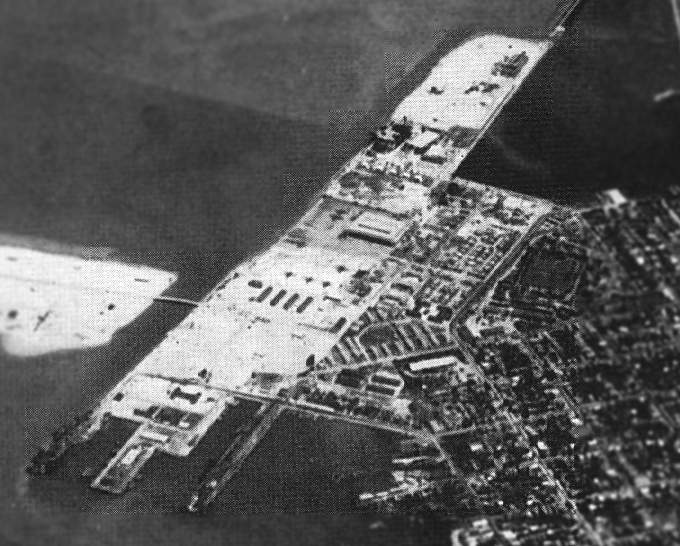
A WW2-era aerial view looking east at Trumbo Point (National Archives photo).
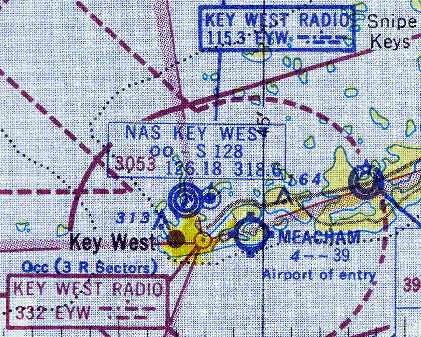
"NAS Key West" was still depicted as a seaplane base on the August 1954 Miami Sectional Chart (courtesy of Chris Kennedy).
Stuart Babins recalled, “Trumbo Point... I was engaged in seaplane operations there at least until January of 1961
at which time I was involved in Operation Springboard which was centered there at that time.
I was in one of the two P-5 squadrons based in Bermuda.
Operation Springboard was an annual series of events that occurred early each year in which Patrol Squadrons conducted antisubmarine exercises.”
According to Jim, “In 1961... my wife's father, Lcdr. John Black was Officer in Charge of the seaplane base.”
Seaplane operations were discontinued at Trumbo Point at an unknown date after 1961.
The aviation facilities were then reused by Navy helicopter squadrons through the late 1960s.
Starting in 1977 the piers to the west of Trumbo Point became the home of the Navy's hydrofoil squadron PHMRON-2,
which operated the 6 ships of the PHM-1 Pegasus class.
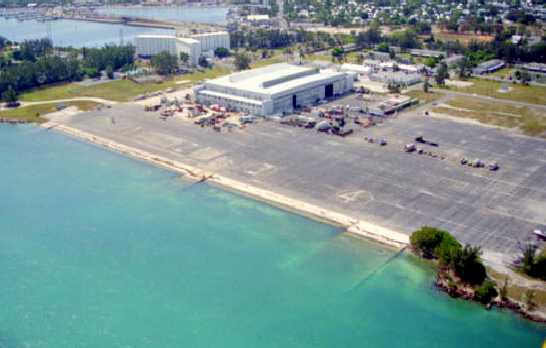
A circa 1980s aerial view looking southeast at the Trumbo Point seaplane ramp & hangar.
A 1994 USGS aerial photo showed 4 numbered helicopter landing spots painted on the edge of the seaplane ramp.
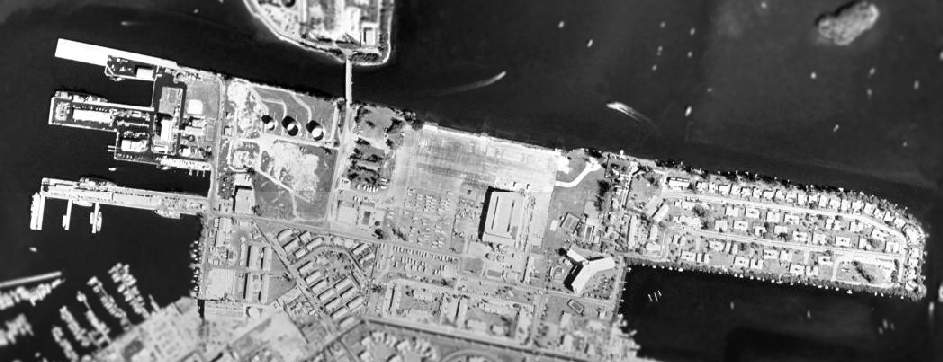
The 1999 USGS aerial photo showed that a cross helipad marking had been added to the northwest corner at the ramp at some point between 1994-99.
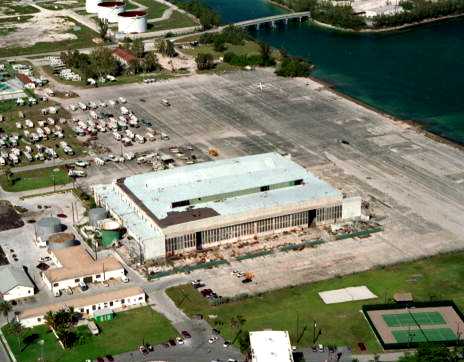
A 1999 aerial view looking west at the Trumbo Point seaplane hangar & apron.
A 2009 aerial photo showed that 2 helipad markings were still visible on the ramp.
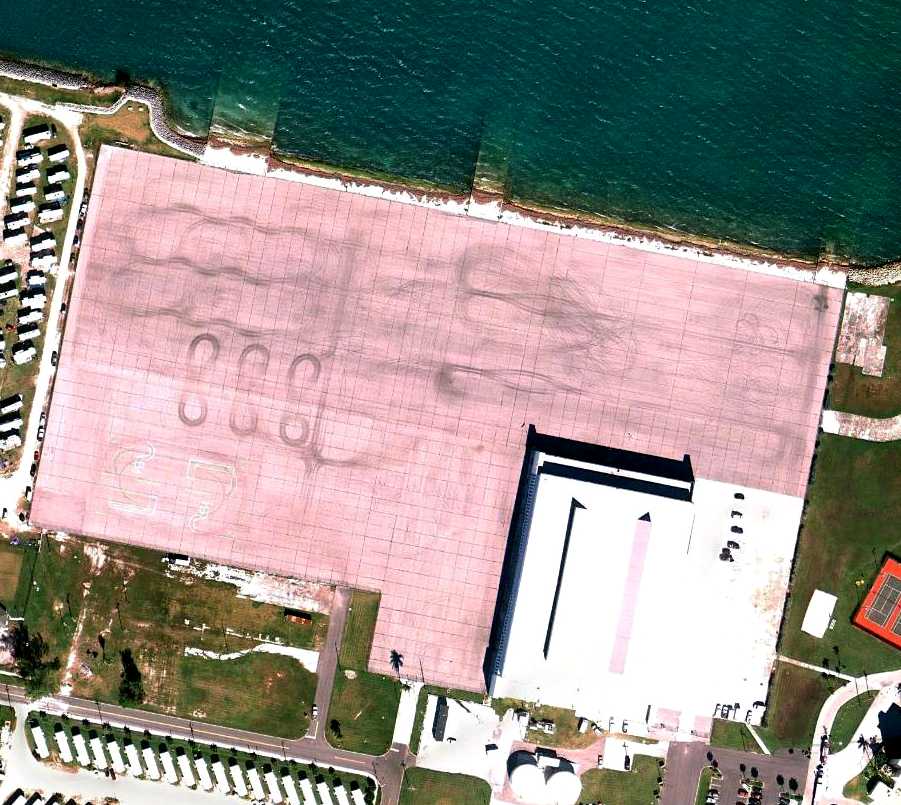
A 12/28/10 aerial photo showed that the ramp had been repaved (for what purpose?) at some point between 2009-2010.
The former seaplane hangar remained standing.
See also:
http://www.globalsecurity.org/military/facility/key_west.htm
____________________________________________________
Since this site was first put on the web in 1999, its popularity has grown tremendously.
That has caused it to often exceed bandwidth limitations
set by the company which I pay to host it on the web.
If the total quantity of material on this site is to continue to grow,
it will require ever-increasing funding to pay its expenses.
Therefore, I request financial contributions from site visitors,
to help defray the increasing costs of the site
and ensure that it continues to be available & to grow.
What would you pay for a good aviation magazine, or a good aviation book?
Please consider a donation of an equivalent amount, at the least.
This site is not supported by commercial advertising –
it is purely supported by donations.
If you enjoy the site, and would like to make a financial contribution,
you
may use a credit card via
![]() ,
using one of 2 methods:
,
using one of 2 methods:
To make a one-time donation of an amount of your choice:
Or you can sign up for a $10 monthly subscription to help support the site on an ongoing basis:
Or if you prefer to contact me directly concerning a contribution (for a mailing address to send a check),
please contact me at: paulandterryfreeman@gmail.com
If you enjoy this web site, please support it with a financial contribution.
please contact me at: paulandterryfreeman@gmail.com
If you enjoy this web site, please support it with a financial contribution.
____________________________________________________
This site covers airfields in all 50 states.